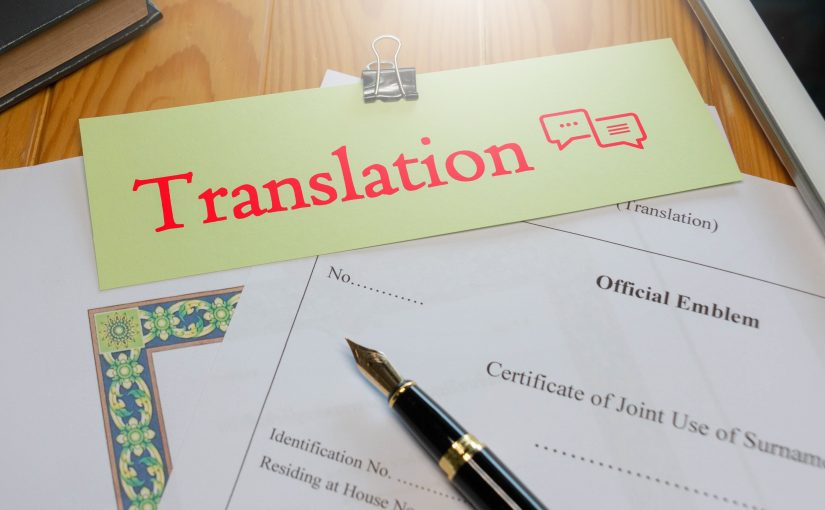Category: Articles
-

The Essential Role of Certified Interpreters Services in Los Angeles
Table Of Content Introduction to Language Services in Los Angeles Why Certified Interpreters Matter Bridging Cultures Through Accurate Communication How L.A. Translation Supports Your Needs Make Use of Technology and Human Expertise The Bottom Line FAQs Introduction to Language Services in Los Angeles Los Angeles is one of the most linguistically diverse cities […]
-

Expert Interpreter Services: Trusted Court Certified Support
Table of Contents What Makes a Court Certified Interpreter Essential How Our Interpreter Services Support Legal Proceedings Techniques That Help Maintain Accuracy in Interpretation Why Our Interpreter Services Make a Difference Choose L.A. Translation for Trusted Language Support Frequently Asked Questions What Makes a Court Certified Interpreter Essential Courtroom proceedings require more than […]
-

The Ultimate Guide to Translating Your Birth Certificate: Steps, Tips, and Services
Translating a birth certificate can be essential for various reasons, such as immigration applications, marriage abroad, or international studies. Specifically, if you’re dealing with the U.S. Citizenship and Immigration Services (USCIS), you’ll need a precise translation adhering to specific requirements. In this comprehensive guide, provided by L.A. Translation, we delve into the steps, tips, and […]
-

Translation vs. Interpreting: Unpacking the Key Differences and When to Use Each
In the world of global communication, understanding the nuances between translation and interpreting is crucial for anyone working across languages. While the terms are often used interchangeably outside the industry, they refer to distinct practices with their own methodologies, skills, and uses. L.A. Translation, with its extensive experience in both fields, is here to […]
-
Role of a check interpreter in international depositions and trials
The role of check interpreters in international depositions. We had a deposition on a patent infringement case, where the plaintiff’s attorney was a young and inexperienced monolingual attorney who said he never had a deposition with an interpreter before. The other party brought a check interpreter who was re-translating everything the main interpreter said. The […]
-
California courts face interpreter shortage
https://www.latimes.com/local/lanow/la-me-ln-court-interpreter-20170905-story.html Federal law enforcement began investigating California’s courts seven years ago after receiving complaints that two Korean-speaking women in Los Angeles had been denied court interpreters. Courts in other states also were examined and faulted. Along with California, they began working to comply with U.S civil rights law, which bars discrimination based on national […]
-
A very promising job, medical interpreter
A promising job: medical interpreter (Dr. Jenny Park, President of LA Translation and Interpretation) When people immigrate to the U.S., they would usually find jobs lower in status than in their original country due to lack of proficiency in English. However, there is a job that provides you high and stable income in the U.S. […]
-
一份有前途的工作:医学口译 Jenny Park 博士,洛杉矶翻译学院 (LA Translation and Interpretation) 校长
移民到美国之后,受英语水平的限制,人们新找的工作往往比其原籍国工作的地位要低。然而,美国有一种工作可以为会讲普通话和英语的您提供稳定的高收入,因为没有美国人能像您一样熟练地讲普通话。这份职业就是医学口译。 “成为认证医学口译。入行门槛比认证法庭口译低,并且能提供稳定的工作。”与法庭口译测试相比,医学口译证书测试更为简单,因为不会考同声传译,视译也仅限于英语到普通话。目前认证口译人员短缺。值得注意的是,加利福尼亚州于 2015 年采用了“语言协助服务计划 (Language Access Plan)”,建议将刑事案件的认证法庭口译服务推广至民事案件中。该计划已经实施了 2 年,但由于缺乏认证法庭译员,目前只能为优先案件安排口译服务,比如 TRO、儿童监护、驱逐出境、监护和接管以及老人虐待案。 认证医学口译方面的情况更加糟糕。法律要求免费向所有英语水平有限的病患免费提供认证医学口译服务,但加利福尼亚州只有 25 个国家委员会认证的医学口译人员。“应至少再增加 30 人才能满足现在的需求”,Park 博士介绍道。 洛杉矶翻译学院有资质授予 40 小时医学口译培训证书,通过笔试和口试之后即可成为美国医学口译认证委员会 (National Board of Certification for Medical Interpreters) 认证的译员。本院已获州政府授权,专业提供培训课程。 “如果您会讲普通话和英语,不妨来试试认证口译这份挑战,”Park 说道,“获得认证之后,证书终身有效。退休之后可以长期从事口译工作,可以做兼职,也可以当医院或法院的雇员,为英语不熟练的人架起沟通的桥梁,同时您也可以不断地学到新知识,提升自我。”此外,获得如此好的一份工作,您需要做的唯一投资就是“熟练使用母语和英语”以及“一小笔培训学费”。咨询电话:213-368-0700,电子邮件:info@latranslation.com。
-
How to submit an English document to a Chinese court
Do you know the procedure to have your document legalized for a Chinese court? Yesterday we had a client who had to submit an English letter to a Chinese court. Unfortunately, she had no idea what to do about certifying it. We checked the Chinese court, our Chinese translators in china, our Chinese translators […]
-
Overwatch quotes in translated from Arabic, Korean, Japanese, Chinese, French, German, Russian into English
Ana (Egyptian Arabic translated to English): ” وريهم أوتك ” (warreehom ow-wetak) : Show them your power ” العدالة نازلة من فوق ” (el adala nazla men fooa) : Justice rains from above ” أنا هاخد بالي منك ” (Ana hakhod bali mennak) : I’ll take care of you ” ده هيفيدك ” (dah hayfeedak) […]
